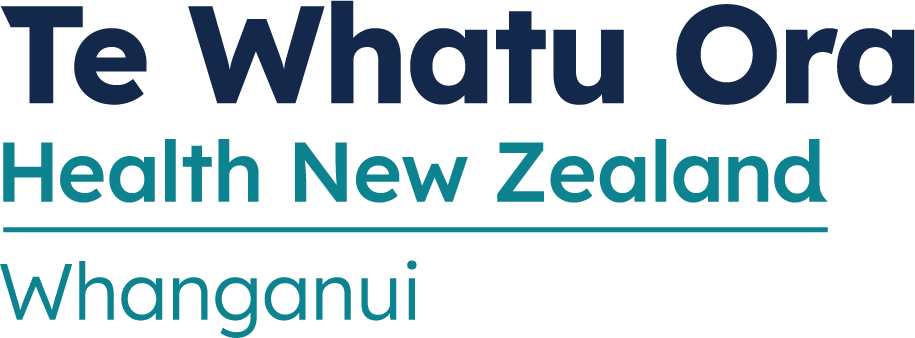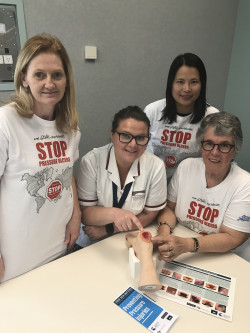

The pressure injury team with a foot mannequin showing the effects of pressure injuries
13 November 2019
Whanganui District Health Board is partnering with ACC to help people caring for family at home to understand what causes pressure injuries (also known as bed sores), how to recognise them at an early stage, and what to do about them.
The pressure injury team will be at Trafalgar Square, 100 Taupo Quay, Whanganui, from 10.30am – 2.30pm on Thursday 21 November, to talk to anyone who wants to find out more. The team includes nurse educators and a dietician who can help advise what foods to eat to keep healthy and aid healing.
Thursday 21 November also marks Worldwide STOP Pressure Injury Day and the team is launching a pressure injury helpline people can call for help and advice. The helpline is 021 901 538.
Nurse educator Margaret Gosnell will be at Trafalgar Square next Thursday to help people know what to look for.
“Whether you have limited movement yourself or are a carer or whānau member who is looking after a loved one at home, if pressure injuries are spotted early they can be treated.
“We are a friendly and knowledgeable group who are happy to talk to anyone about pressure injuries. Keeping people safe and well at home is really important. Everyone – health professionals, carers, whānau and support people have a role to play to prevent pressure injuries,” Mrs Gosnell says.
For more information please visit: https://www.health.govt.nz/our-work/diseases-and-conditions/pressure-injuries
Information about pressure injuries
- Pressure injuries (also known as bedsores or pressure ulcers) are a preventable cause of harm affecting people of all ages receiving care in hospital, residential care and in the community.
- Pressure injuries usually develop over ‘bony’ parts of the body due to sustained pressure, or pressure combined with shear and/or friction. Those with decreased mobility and sensation are at increased risk.
- The effects of pressure injuries include pain, loss of function, reduced mobility, distress, prolonged treatment, septicaemia and even death.
- Pressure injuries reduce quality of life, delay recovery and have a significant impact on patients, their family/whānau and the health care system.



